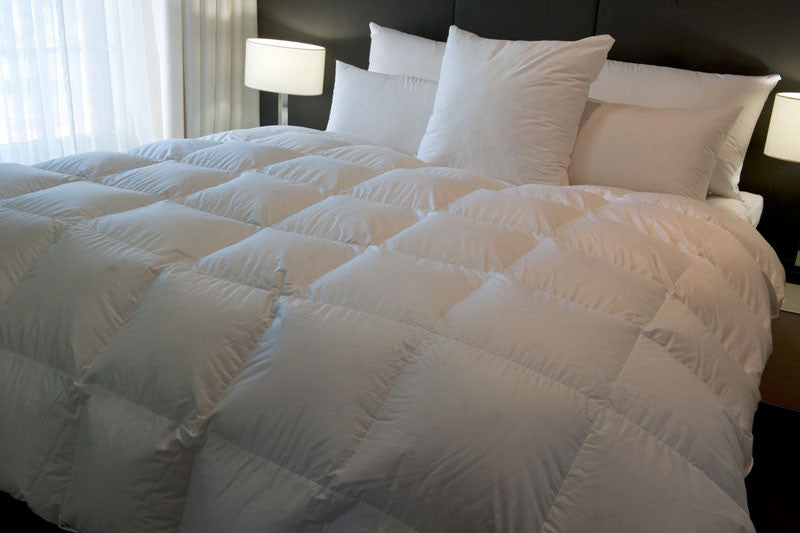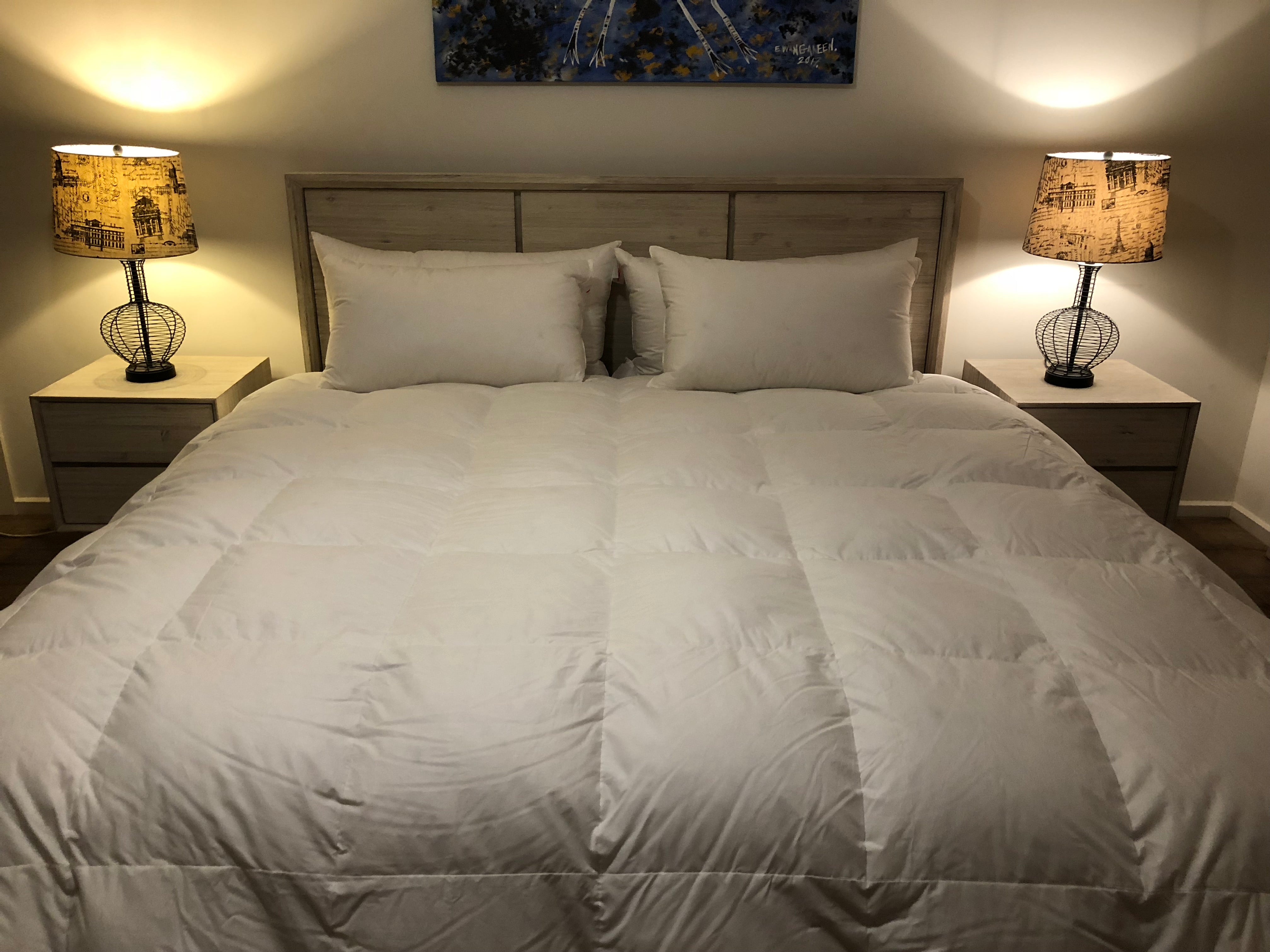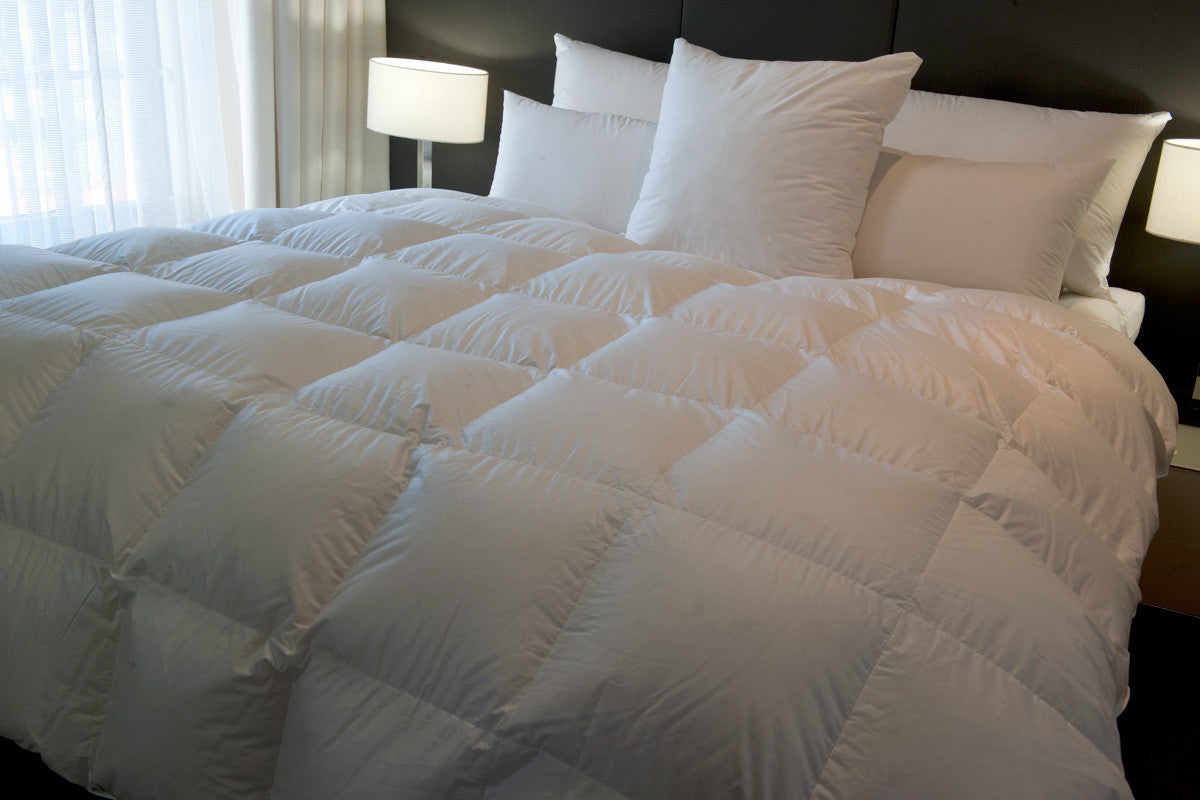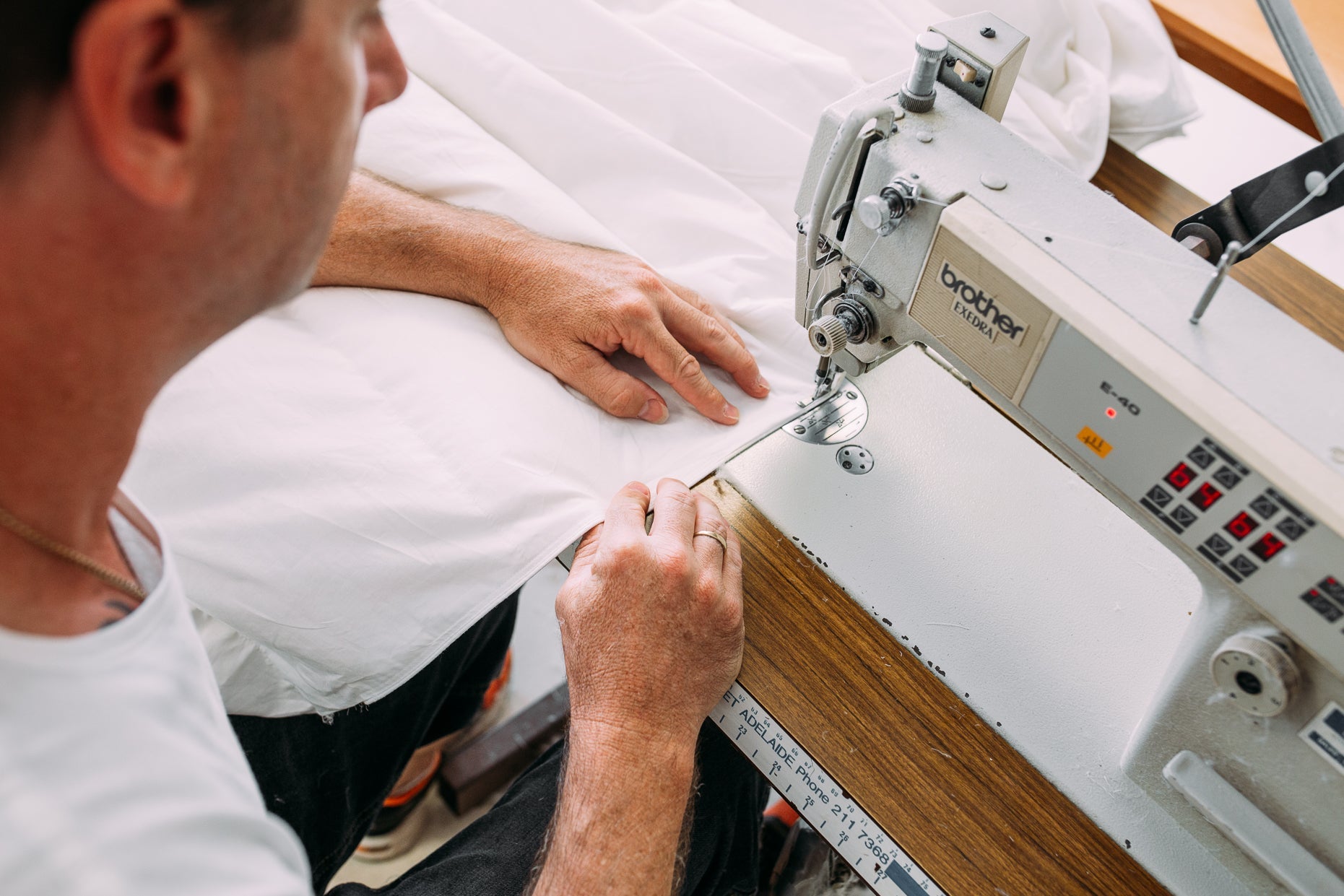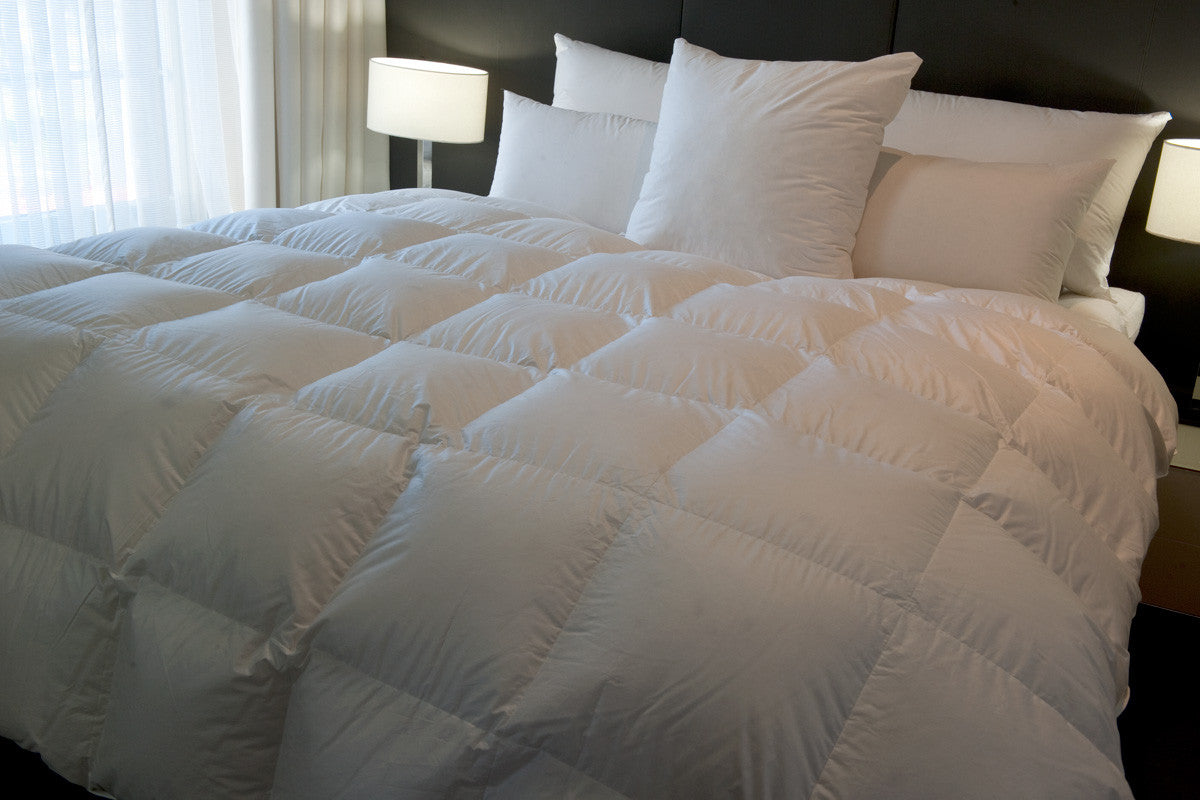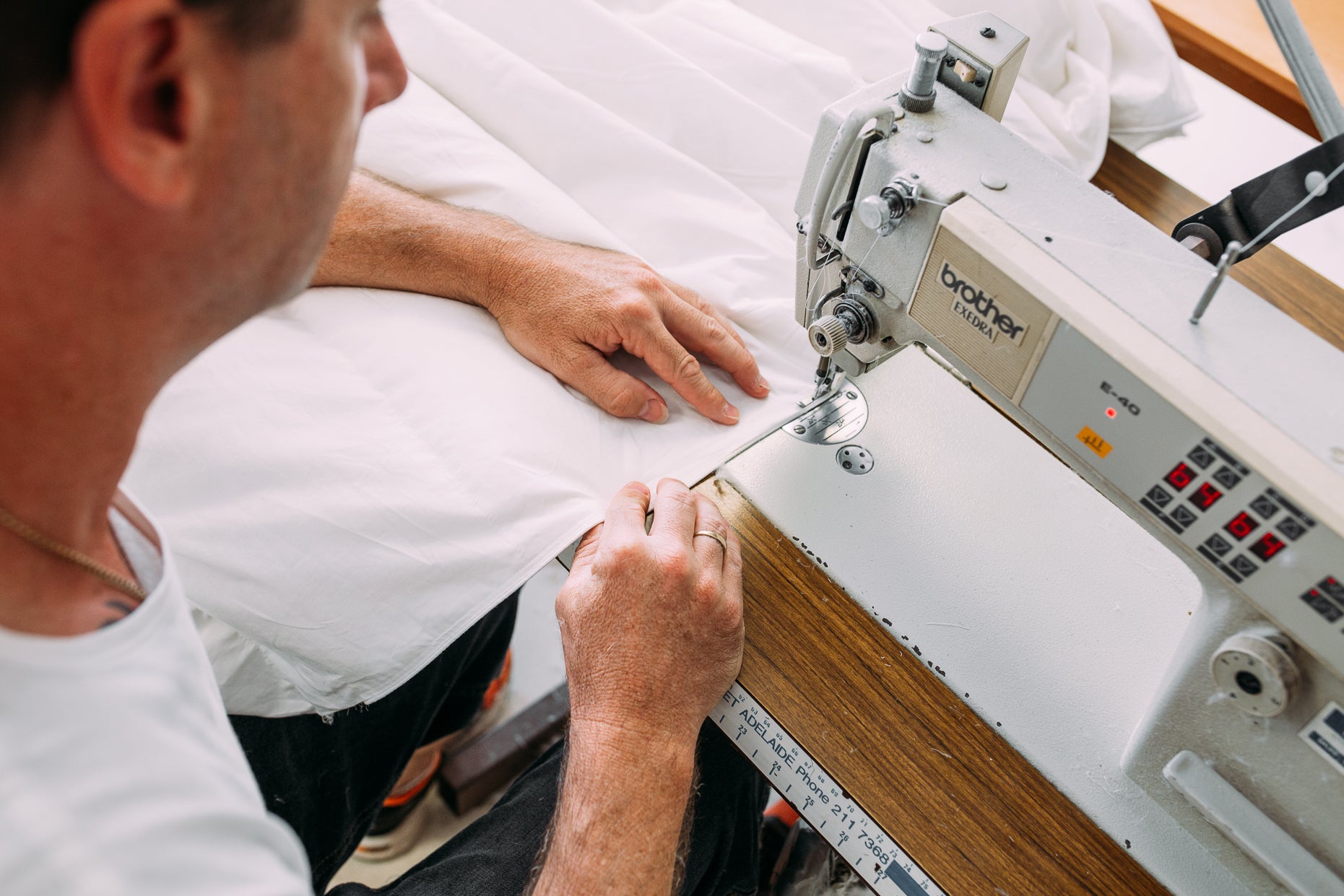
What’s the difference between goose down and duck down?
When choosing a quilt or doona, the terms “goose down” and “duck down” often come up — but what’s the real difference between them? Both are natural insulators prized for warmth and softness, yet they differ in quality, structure, and performance. Understanding these differences helps you make an informed decision when investing in long-lasting bedding that truly supports comfort and sleep quality. Let’s break down how goose down and duck down compare in every key area.
Frequently Asked Questions
What is down, and how is it different from feathers?
Down refers to the fine, fluffy clusters found beneath a bird’s outer feathers. Unlike feathers, which have stiff quills, down clusters are soft and three-dimensional, creating air pockets that trap warmth. This makes down ideal for quilts, jackets, and sleeping bags.
Why is goose down usually more expensive than duck down?
Goose down clusters are larger and more mature, providing superior insulation and durability. Because geese are larger birds and less commonly farmed than ducks, their down is rarer — leading to a higher price point.
Does duck down smell more than goose down?
Duck down can carry a slightly stronger natural odour due to dietary differences between ducks and geese. However, high-quality processing removes most scents, so reputable brands ensure both goose and duck down products are odour-free. All of our downs are odour free.
Is down hypoallergenic?
High-quality down that has been thoroughly cleaned and sanitised all of our downs are hypoallergenic. The key is ensuring the down undergoes rigorous washing, sterilisation, and filtering to eliminate dust, dander and impurities.
Can down be ethically sourced?
Yes and it always should be. Responsible brands adhere to strict animal welfare standards and transparency certifications, ensuring that all down is collected humanely and traceably.
Key Features to Consider
-
Fill Power: A higher fill power indicates greater loft, warmth, and quality. Goose down often scores higher here.
-
Insulation-to-Weight Ratio: Goose down provides more warmth for less weight, ideal for colder climates.
-
Odour Control: Premium processing eliminates natural oils, leaving the down fresh and neutral.
-
Moisture Resistance: Look for treated down that maintains loft even in humid conditions.
-
Longevity: Well-made down products can last over a decade with proper care.
-
Ethical Certification: Choose suppliers with Responsible Down Standard (RDS) or similar accreditation.
Understanding the Difference Between Goose Down and Duck Down
At its core, the distinction between goose down and duck down lies in the size, quality, and performance of their clusters. Goose down tends to deliver a higher level of insulation and luxury due to its larger cluster structure and superior warmth retention. Duck down, on the other hand, provides an affordable, lightweight alternative that still delivers excellent comfort for moderate climates. For anyone seeking an enduring investment in sleep quality, knowing which to choose makes all the difference — and it’s exactly the kind of guidance you’ll find from Supreme Quilts.
Fill Power and Warmth
Fill power measures how much space one ounce of down occupies — a direct indicator of loft and warmth. Goose down typically has a fill power of 600–900, compared to duck down’s 400–750 range. The larger clusters in goose down trap more air, resulting in superior insulation without extra bulk. For winter bedding or cooler climates, goose down offers that plush, cloud-like warmth prized by premium quilt makers. Duck down, while slightly denser, provides excellent value and is perfect for year-round comfort in milder environments.
Micron-Level Fibre Structure
At a microscopic level, goose down clusters feature finer filaments and a more complex branching pattern. These microstructures form a three-dimensional web that traps warmth effectively while allowing air circulation. Duck down fibres are slightly thicker, offering a firmer texture that still delivers comfort but with a touch less loft. This variation explains why goose down feels softer and “fluffier” — a subtle yet noticeable difference appreciated by those seeking hotel-grade bedding quality from Supreme Quilts products.
Thermal Efficiency vs. Weight Ratio
The balance between insulation and weight is one of the most important factors when comparing the two. Goose down provides higher thermal efficiency at a lower weight, making it ideal for lightweight quilts and cold-weather sleeping. Duck down tends to be heavier for the same warmth level, which can be advantageous for those who enjoy a more substantial quilt feel. In regions like southern Australia where winters are cool but not harsh, duck down can offer the perfect middle ground between warmth and cost-effectiveness.
Processing and Odour Neutralisation Techniques
The natural oils present in down can cause mild odours if not properly processed. Top-tier manufacturers use multi-stage washing, sterilisation, and deodorising systems that neutralise odours without damaging the delicate fibres. Goose down naturally holds less odour due to the bird’s diet, but both down types can achieve a perfectly neutral scent when processed under strict hygiene standards. For those sensitive to smell or with allergies, choosing a brand that guarantees fully sanitised down ensures a fresh and healthy sleep environment. If you’d like more guidance on selecting the right down product for your needs, don’t hesitate to contact us — professional advice can help you match warmth level, fill type, and budget seamlessly.
Performance Longevity and Moisture Resistance
Durability is a key advantage of high-quality down. Goose down’s larger, more resilient clusters retain loft longer and resist clumping, maintaining consistent warmth for many years. Duck down, while slightly less durable, still performs admirably with proper care and regular airing. Whether you live in Brisbane, Melbourne, or Perth, proper storage and gentle cleaning will keep your down quilt performing beautifully year after year.
Ethical Supply Chain Transparency and Market Perception
The global shift toward ethical sourcing has made transparency a priority for discerning buyers. Responsible brands now trace every batch of down to certified farms, ensuring no live-plucking or force-feeding occurs. Labels like RDS (Responsible Down Standard) and Downpass certification verify humane collection and environmentally responsible production. Goose down, due to its association with high-end bedding, carries a more luxurious reputation, while duck down offers an eco-conscious alternative without compromising warmth or comfort. Choosing ethically sourced down supports sustainability and aligns with modern consumer values — a key factor influencing many purchasing decisions today.
Comparative Overview: Goose Down vs Duck Down
When comparing goose down and duck down directly, several clear distinctions emerge. Goose down features larger, loftier clusters that offer superior insulation, lightness, and longevity. Duck down, while denser, provides a more budget-friendly solution that still delivers dependable warmth and comfort.
-
Cluster Size: Goose down clusters are larger and more robust, while duck down clusters are smaller and compact.
-
Insulation: Goose down provides higher warmth retention due to its superior fill power; duck down offers good insulation depending on its grade.
-
Durability: Goose down generally lasts longer and resists flattening; duck down may lose loft slightly faster.
-
Cost: Goose down sits at a higher price point due to its rarity and premium quality, while duck down remains a cost-effective alternative.
-
Common Use: Goose down is favoured for luxury bedding and high-performance outerwear, whereas duck down is often chosen for everyday quilts and value-oriented products.
This breakdown highlights how each option serves a distinct purpose — goose down for ultimate comfort and longevity, and duck down for practical, affordable warmth.
Making the Right Choice for Your Home
When deciding between goose down and duck down, consider how you prioritise warmth, texture, and budget. Goose down offers unmatched loft, warmth, and softness — perfect for cold climates or luxury bedding. Duck down provides excellent value, moderate warmth, and a firmer feel ideal for everyday use. Both options deliver natural breathability and lightweight insulation far superior to most synthetic alternatives.
Another consideration is maintenance. Regularly airing your quilt and storing it in a dry, breathable bag extends its lifespan. Avoid frequent washing unless necessary, as natural down retains its quality best when kept dry and protected. With proper care, a quality down quilt can last a decade or more, maintaining both comfort and warmth through countless seasons.
For those investing in a premium quilt, prioritising fill power, ethical sourcing, and craftsmanship ensures lasting comfort. Whether you prefer the indulgent softness of goose down or the practical durability of duck down, your choice should align with your local climate, personal warmth preference, and values around sustainability.
The Bottom Line
Both goose down and duck down have earned their place as top-tier natural insulators, and the right choice ultimately depends on your needs and priorities. Goose down is best suited for those seeking the lightest, warmest option with long-term durability. Duck down, while slightly denser, provides outstanding comfort and affordability. By understanding how factors like fill power, microstructure, and processing influence quality, you can confidently choose bedding that delivers comfort season after season.
When you buy from trusted Australian brands committed to ethical production and quality assurance, you can sleep easy knowing your quilt supports both comfort and conscience. Whether you’re upgrading your winter bedding or choosing a gift of lasting luxury, investing in the right down type will reward you with warmth that feels as natural as it is enduring.

